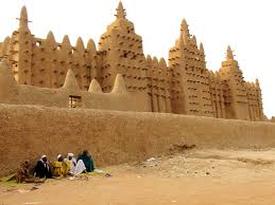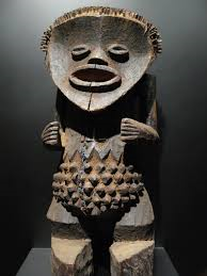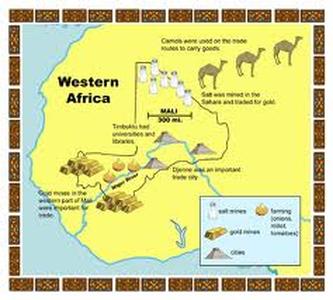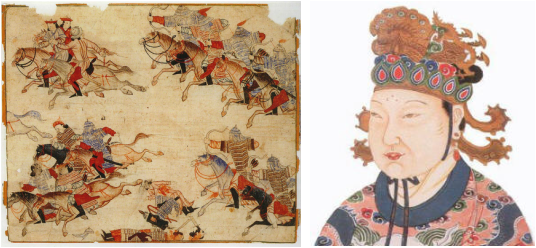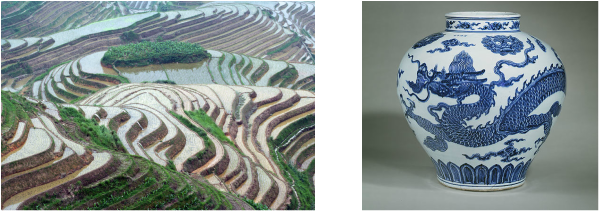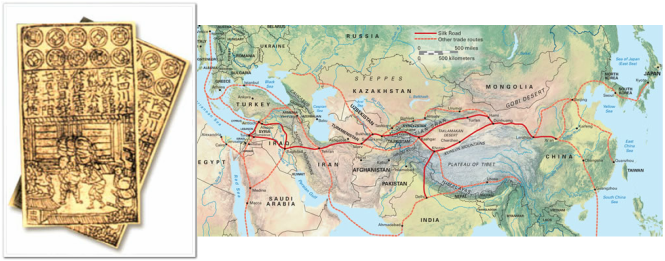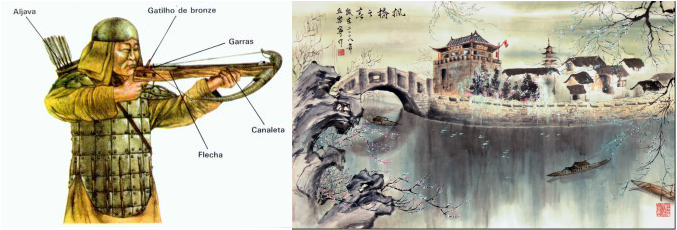Persian Charts 500-1500
Regions of the World
Persian Chart : Latin America 500-1500
By Julianna Smith
Political
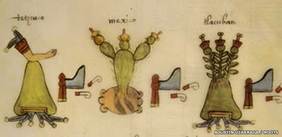
Triple Alliance (Aztec Empire)–In 1428, this alliance was formed between the Aztec of Tenochtitlan and two other city-states, allowing more of a political framework than they had ever had before. These areas agreed that they would not go to battle with one another. http://archaeology.about.com/od/aztecarchaeology/a/Triple-Alliance.htm
Information taken from Robert W. Strayer’s Ways of the World Second Edition
Information taken from Robert W. Strayer’s Ways of the World Second Edition
Altepetl and the tlatoani (The Aztec Empire) – The Aztec Empire was divided into city states called the altepetl. Each of these city states were ruled by a supreme official known as a tlatoani. This ruler owned everything in his city state. He collected tributes, was the overseer of markets, and was in charge of the military. The Emperor of the Aztec Empire was called the Huey Tlatoani. The emperor was chosen by a council of four elites.
http://tarlton.law.utexas.edu/exhibits/aztec/aztec_politics.html
http://tarlton.law.utexas.edu/exhibits/aztec/aztec_politics.html
The Maya Political System – The Maya civilization never came together as one united empire. They existed as individual states. At the start, the Maya were ruled simply by chiefs. However, later the states were highly centralized, governed by powerful political figures.
http://tarlton.law.utexas.edu/exhibits/aztec/maya_politics.html
http://tarlton.law.utexas.edu/exhibits/aztec/maya_politics.html

The Nancom (Maya) – Each Maya state had a military ruler called a nancom. This person ruled for three years. He was in charge of organizing war strategy and preparing the army for battle.
Batabs (Maya) – The Batab of a city would hold judicial, administrative, and sometimes military power in the places that they presided over. They were not paid tribute, but the people of the cities they held power in supported them. The Batab was also in charge of a small council.
http://tarlton.law.utexas.edu/exhibits/aztec/maya_politics.html
Batabs (Maya) – The Batab of a city would hold judicial, administrative, and sometimes military power in the places that they presided over. They were not paid tribute, but the people of the cities they held power in supported them. The Batab was also in charge of a small council.
http://tarlton.law.utexas.edu/exhibits/aztec/maya_politics.html
 The Sapa Inca
The Sapa Inca
Government (Inca Empire) –
· The Inca Empire was a bureaucratic empire.
· The empire had an emperor called the Sapa Inca, and was said to be the descendant of the god Viracocha and the son of Inti the sun god.
· The Inca Empire had eighty provinces, all ruled by a governor.
· Subjects of the Inca Empire were put into groups of ten, fifty, one hundred, five hundred, and so on people.
Information taken from Robert W. Strayer’s Ways of the World Second Edition
· The Inca Empire was a bureaucratic empire.
· The empire had an emperor called the Sapa Inca, and was said to be the descendant of the god Viracocha and the son of Inti the sun god.
· The Inca Empire had eighty provinces, all ruled by a governor.
· Subjects of the Inca Empire were put into groups of ten, fifty, one hundred, five hundred, and so on people.
Information taken from Robert W. Strayer’s Ways of the World Second Edition
Economy

Aztec Marketplaces – Almost every village and town in the Aztec Empire had a marketplace. At these marketplaces were mostly crafts that were made by the people. The city of Tlatelolco, near Tenochtitlan, had the largest market place in the Aztec Empire.
Information taken from Robert W. Strayer’s Ways of the World Second Edition
Information taken from Robert W. Strayer’s Ways of the World Second Edition
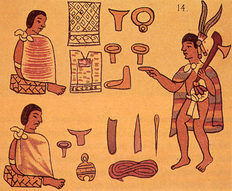 Pochteca
Pochteca
Economy (Aztec Empire)-
· The Aztec Empire’s economy was primarily based on agriculture. The people used every piece of arable land that they could. They invented crop rotation to improve the land they farmed on.
· Trade – Trade, both locally and long distance, helped to regulate the Aztec economy. Crafts and crops were traded. Merchants also had a hand in keeping the Aztec economy stable by trading goods between nations.
· Pochteca (Aztec Empire) – The professional merchants in the Aztec Empire were called pochteca. They traded within their regions and also outside their regions.
http://enloehs.wcpss.net/projects/candc/merg/dmimerg7/dmimerg7.htm
http://aztec.com/page.php?page=economy
Information taken from Robert W. Strayer’s Ways of the World Second Edition
· The Aztec Empire’s economy was primarily based on agriculture. The people used every piece of arable land that they could. They invented crop rotation to improve the land they farmed on.
· Trade – Trade, both locally and long distance, helped to regulate the Aztec economy. Crafts and crops were traded. Merchants also had a hand in keeping the Aztec economy stable by trading goods between nations.
· Pochteca (Aztec Empire) – The professional merchants in the Aztec Empire were called pochteca. They traded within their regions and also outside their regions.
http://enloehs.wcpss.net/projects/candc/merg/dmimerg7/dmimerg7.htm
http://aztec.com/page.php?page=economy
Information taken from Robert W. Strayer’s Ways of the World Second Edition
Inca Economy –
· The Inca Empire had a wide range of economic networks. This came from the people of the land that the Inca’s conquered. Although they did not collect tribute from the people, they required them to give labor services called mita. In this service, people would produce goods to be traded.
· The people who were required for mita were taken and put into groups depending on their special skills. For example, those with certain skills would go to work in textile manufacturing, producing metal goods, and creating stonework.
· No large scale merchant class emerged out of the Inca Empire, as it did with the Aztec Empire.
Information taken from Robert W. Strayer’s Ways of the World Second Edition
· The Inca Empire had a wide range of economic networks. This came from the people of the land that the Inca’s conquered. Although they did not collect tribute from the people, they required them to give labor services called mita. In this service, people would produce goods to be traded.
· The people who were required for mita were taken and put into groups depending on their special skills. For example, those with certain skills would go to work in textile manufacturing, producing metal goods, and creating stonework.
· No large scale merchant class emerged out of the Inca Empire, as it did with the Aztec Empire.
Information taken from Robert W. Strayer’s Ways of the World Second Edition

Amazon River Trade – The Amazon River, located in western South America, helped to regulate the trade in South America. The Amazon River was accessible by canoes, making it very easy for the South American people to trade with one another.
Information taken from Robert W. Strayer’s Ways of the World Second Edition
Information taken from Robert W. Strayer’s Ways of the World Second Edition
Maya Economy – The Maya from about 200-900CE had extensive commercial interactions with the large city state of Teotihuacan. The Maya conducted trade by land and by sea. Most goods that were traded were luxury items.
Information taken from Robert W. Strayer’s Ways of the World Second Edition
Information taken from Robert W. Strayer’s Ways of the World Second Edition
Religion
 Huitzilopochtli
Huitzilopochtli
Aztec Deities – The Aztec Empire incorporated many deities into their culture. The main deity was Huitzilopochtli, the god of all. Other gods that were worshipped by the Aztecs were Tlaloc, the god of rain, Tonatiuh, the sun god, Chalchiuhtlicue, the goddess of water, and Centeotl, the god of maize (corn).
http://archaeology.about.com/od/aztecarchaeology/tp/Aztec-Gods.htm
http://archaeology.about.com/od/aztecarchaeology/tp/Aztec-Gods.htm
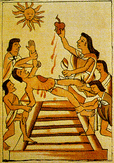
Sacrifices (Aztec Empire) – The patron god of the Aztecs, Huitzilopochtli, was said to lose all of its energy, as it was in battle with the darkness. The Aztecs believed that human blood would replenish this lost energy. In consequence, the Aztecs would sacrifice their conquered peoples to the god.
Information taken from Robert W. Strayer’s Ways of the World Second Edition
Information taken from Robert W. Strayer’s Ways of the World Second Edition
 Yum Cimil, the god of death
Yum Cimil, the god of death
Maya Deities – The Maya believed in over one hundred deities, all of which helped explain the world. Yum Cimil, or Ah Puch, was the god of death. Kinich Ahau was the sun god. Chac was believed to be the god of rain and thunder, and Yum Kaax was said to be the god of agriculture.
http://www.crystalinks.com/mayangods.html
http://www.crystalinks.com/mayangods.html
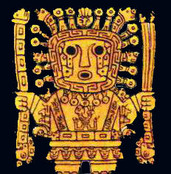 Viracocha
Viracocha
Inca Deities – The Incas worshipped a lot of gods and goddesses of nature. Some of the most important deities to the Inca Empire were: Inti, the sun god, Viracocha, the creator, Mamaquilla, the goddess of the moon, and Illapa, the weather god.
Inca Ancestor Veneration - The veneration of one’s ancestors was very important to the religious culture of the Incas. The souls of passed relatives were believed to protect their descendants. They would be buried with their most prized possessions, and they were treated as if they were still living. Also, the souls of the dead would be consulted or used as oracles regularly.
http://enloehs.wcpss.net/projects/candc/merg/ememerg7/ememerg7.html
Inca Ancestor Veneration - The veneration of one’s ancestors was very important to the religious culture of the Incas. The souls of passed relatives were believed to protect their descendants. They would be buried with their most prized possessions, and they were treated as if they were still living. Also, the souls of the dead would be consulted or used as oracles regularly.
http://enloehs.wcpss.net/projects/candc/merg/ememerg7/ememerg7.html
Society
Gender Equality (Inca and Aztec Empire) – In both of these Latin American societies, men held higher positions in politics and religion. Men could serve in the military, while women could not. Also, men were not punished as harshly as women when they committed a crime. Bothe women and men could be priests that were responsible for the veneration of the gods.
· Aztecs – The women’s place was in the home, and she was to work with brooms and weaving spindles. A women’s role in sweeping was regarded as being able to purify the house of evil.
· Incas – The Sapa Inca and his female consort, called the coya, governed together. In the Inca society, both men and women participated in harvesting their crops. Inca women worshipped the moon, and Inca men worshipped the sun.
Information taken from Robert W. Strayer’s Ways of the World Second Edition
· Aztecs – The women’s place was in the home, and she was to work with brooms and weaving spindles. A women’s role in sweeping was regarded as being able to purify the house of evil.
· Incas – The Sapa Inca and his female consort, called the coya, governed together. In the Inca society, both men and women participated in harvesting their crops. Inca women worshipped the moon, and Inca men worshipped the sun.
Information taken from Robert W. Strayer’s Ways of the World Second Edition
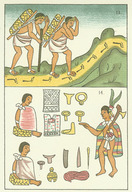
Social Classes (Aztec Empire) – There were two main social classes in the Aztec Empire. There were the nobles and the commoners. The noble group was called the pipiltin, and the new ruler of the Empire would always be chosen from this group. The second class was the commoners, called macehualtin.
http://www.aztec-history.com/aztec-social-classes.html
http://www.aztec-history.com/aztec-social-classes.html
Social Classes (Maya)-There were elite and non-elite classes within the Maya civilization. As time went on in the Maya civilization, power and wealth divided the two classes. Each class did have power and wealth, however, the difference was how much wealth and power they had. The non-elite can be seen as a middle class, while the elite can be seen as high class or royal.
http://books.google.com/books?id=YdgXZao23l0C&pg=PA86&lpg=PA86&dq=maya+social+inequality&source=bl&ots=zZjAhQqzq1&sig=tsOpqLbhpZZx0g9sOvxk5T1JUFc&hl=en&sa=X&ei=NLJFU7jbFaPm2gWUvoDACQ&ved=0CEQQ6AEwBA#v=onepage&q=maya%20social%20inequality&f=false
http://books.google.com/books?id=YdgXZao23l0C&pg=PA86&lpg=PA86&dq=maya+social+inequality&source=bl&ots=zZjAhQqzq1&sig=tsOpqLbhpZZx0g9sOvxk5T1JUFc&hl=en&sa=X&ei=NLJFU7jbFaPm2gWUvoDACQ&ved=0CEQQ6AEwBA#v=onepage&q=maya%20social%20inequality&f=false
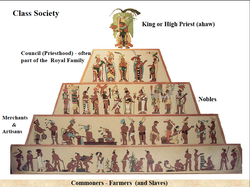
Social Classes (Inca Empire) – There were four main social divisions in the Inca Empire. The first one, and the highest one was the Inca class, which included only the Sapa Inca, or the Emperor. The second was the royalty, which included the Sapa Inca’s wife and his son. The third was the nobility, which included the relatives of the Sapa Inca, and the citizens who gained knowledge from different fields. The fourth was the Ayllu. This class included commoners, conquered peoples, and prisoners.
http://www.machupicchu-inca.com/Inca-Society.html
http://www.machupicchu-inca.com/Inca-Society.html
Intellectual

The Quipu (Inca Empire) – The Quipu was a mathematical system that was innovated by the Incas. The quipu was a system of knots and cords that were used to collect information about the Empire. The color of the cords, the way the knots were tied, the type of knot on a cord, and the spaces between each cord were all significant when deciphering a quipu.
http://quipuapps.com/what-is-a-quipu/
http://quipuapps.com/what-is-a-quipu/
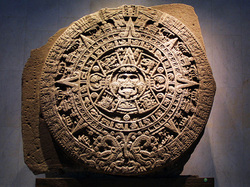
The Mayan Calender (Maya) - The Maya invented a very complex and accurate calendar. As the Maya were very skilled in astronomy and math, they innovated a calendar that could tell when the best days were to battle, to hunt, and to have religious ceremonies. Their calendar was 365 days, like the modern calendar, only the Maya had 18 months made up of 20 days.
http://server1.lomaprieta.santacruz.k12.ca.us/MissionHill/accesshtml.cgi/u/MissionHill/athenab/assignments/ATHENAMW-2.html
http://server1.lomaprieta.santacruz.k12.ca.us/MissionHill/accesshtml.cgi/u/MissionHill/athenab/assignments/ATHENAMW-2.html
Aztec Number System – The Aztecs had a number system based on twenty. They also developed many different symbols to represent numerals. For example, they had dots for the number one and bars for the number five. Also, symbols like a heart, a hand, and an arrow were used to show distances.
http://server1.lomaprieta.santacruz.k12.ca.us/MissionHill/accesshtml.cgi/u/MissionHill/athenab/assignments/ATHENAMW-2.html
http://server1.lomaprieta.santacruz.k12.ca.us/MissionHill/accesshtml.cgi/u/MissionHill/athenab/assignments/ATHENAMW-2.html
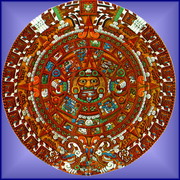
Aztec Astronomy – Because of their extensive mathematical and astronomical knowledge, the Aztecs were able to develop the sun stone calendar. The calendar consisted of 365 days, and was made up of four rings. The calendar contained symbols that stood for things like rain and the four general directions.
http://www.crystalinks.com/aztecalendar.html
http://www.crystalinks.com/aztecalendar.html
Arts and Architecture

Aztec Temples – The temples that were built in honor of the gods were called Teocalli, meaning god houses. The Aztecs built pyramids and monuments dedicated to the gods. Every temple that was built for this purpose had double staircases that faced towards the sun. The top of the pyramid was flat. On the flat surface, there was usually a block that was used for sacrifices. Inside the pyramid were carvings of snakes, statues, and paintings on the wall.
· Specific Temples include : The Templo Mayor, dedicated to Huitzilopochtli and Tlaloc, The Great Pyramid of Cholula, the world’s largest temple in volume, and The Pyramids of the Sun and Moon.
http://www.aztec-history.com/aztec-temples.htmlhttp://www.legendsandchronicles.com/ancient-civilizations/the-ancient-aztecs/aztec-architecture/
· Specific Temples include : The Templo Mayor, dedicated to Huitzilopochtli and Tlaloc, The Great Pyramid of Cholula, the world’s largest temple in volume, and The Pyramids of the Sun and Moon.
http://www.aztec-history.com/aztec-temples.htmlhttp://www.legendsandchronicles.com/ancient-civilizations/the-ancient-aztecs/aztec-architecture/

Maya Architecture – Like the Aztecs, the Mayans built large pyramidal temples dedicated to their gods. They were very large and tall. The Mayans mostly constructed these impressive monuments from stone, although they used wood and adobe in earlier times. The Mayans also built the Ancient Greek style corbelled arch. The towns around a monument would usually be decorated and completely made out of stone, with the monument at the city’s center.
Maya Art – The Maya were very skilled at making pottery and sculptures. Maya pottery was made of several rings of clay piled on top of one another, and usually had paintings on them. Although the Maya did not have sculpting tools, they created many magnificent sculptures. The sculptures were made in honor of their kings and gods.
http://thisishonduras.com/The_Maya.htm
Maya Art – The Maya were very skilled at making pottery and sculptures. Maya pottery was made of several rings of clay piled on top of one another, and usually had paintings on them. Although the Maya did not have sculpting tools, they created many magnificent sculptures. The sculptures were made in honor of their kings and gods.
http://thisishonduras.com/The_Maya.htm

Inca Art – The people of the Inca Empire were very skilled in pottery. They practiced a form called symmetrical pottery. They were also very skilled in glazing their pottery. One of the most important forms of pottery was called the aryballus. This pot was often used for holding water and featured many geometric designs.
http://peru-facts.co.uk/inca-art.html
http://incas.homestead.com/inca_pottery_art.html
http://peru-facts.co.uk/inca-art.html
http://incas.homestead.com/inca_pottery_art.html

Machu Picchu (Inca Empire) – This great Incan civilization resides 7000 feet above sea level and is found in the Andes Mountains. This civilization was made of stone and is approximated to hold 1200 people. Machu Picchu is separated into three sections: agricultural, urban, and religious. Since the civilization was built on a mountain, the agriculture and aqueducts were able to use the natural decline of the mountain. This was on the first level. The second was home to the urban areas like the marketplaces. The third was the religious area, located at the peak of the mountain that watched over the whole civilization.
http://www.peru-machu-picchu.com/
http://www.peru-machu-picchu.com/
Near Geography

The Aztec Empire- the Aztec Empire originated from a hunting and gathering tribe in northern Mexico. The Aztecs settled on Lake Texcoco in Central Mexico when they saw an eagle sitting on a cactus there. They saw this as a sign from the gods. The arrival of the Aztec Empire was right after the decline of the Toltecs, the dominating civilization in the region before them. http://www.history.com/topics/aztecs
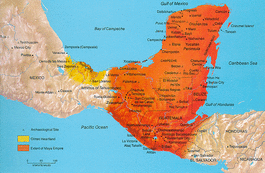
The Maya – The Mayan civilization geographically was located in what is now Belize, Guatemala, El Salvador, and the southern part of Mexico. The Maya were greatly influenced by the Olmecs who lived in Mexico. The Maya were said to have originated from a pastoral group. The Maya civilization reached its peak in 200-900 AD.
http://www.livescience.com/41781-the-maya.html
http://facstaff.gpc.edu/~shale/humanities/literature/world_literature/classprojects/mexico/maya.html
http://www.livescience.com/41781-the-maya.html
http://facstaff.gpc.edu/~shale/humanities/literature/world_literature/classprojects/mexico/maya.html

The Inca – The Inca Empire, located in South America, extended from what is now Ecuador down to Chile while including Peru and parts of Bolivia and Argentina. The Empire was built in the Andes Mountains and arose circa 13th century. The military capital in the empire was the city of Cuzco, located in modern day Peru. This empire was the largest empire in America before Christopher Columbus came.
http://www.princeton.edu/~achaney/tmve/wiki100k/docs/Inca_Empire.html
http://www.angelfire.com/pa4/theincas/location.html
http://www.princeton.edu/~achaney/tmve/wiki100k/docs/Inca_Empire.html
http://www.angelfire.com/pa4/theincas/location.html
Latin America Persian Chart : 500 - 1500
By Julianna Smith
By Julianna Smith
Sub-Saharan Africa Persian chart
political

· Sub-Saharan Africa civilizations varied geographically from the
Songhai empire, mail, Igbo, the great Zimbabwe, and the Swahili
civilization
· Power was
shared among village people and was based on kinship rather than a monarchy in
many of these civilizations
·These were all powerful trading empires and developed during this time
period
· Mali conquered Ghana and their most powerful ruler was Mansa Musa who converted to
Islam and based laws on the Quran, thus making Timbuktu a center for Muslim
education and culture
· Songhai was the largest West African state with an efficient
bureaucracy.
· Great Zimbabwe was a powerful centralized city-state in the rainforest of Sub-Saharan
Africa near the Limpopo River.
· Some east African city-states were Mogadishu, Kilwa and were built on the basis of trade
with Arab and Persian merchants. The cultural blending of Arabic and the Bantu
language and culture created the Swahili
civilization.
· The Bantu as a stateless society and relied on kinship groups and that was later replaced
by chiefdoms which was basically military. The kingdom of Congo as the most
centralized.
· Ghana has a monarchy with a capital at Koumbi Saleh. They had a large army for protection
against nomads and to help with allies.
· The Mali Empire was built by Sundiata, “The Lion Prince.” This empire included former Ghana, which they conquered, and surrounding kingdoms. The capital was Niani and Mansa Musa ruled during the highest point of the empire.
·The onghai Empire replaced the Mali Empire with a capital at Gao. Sunni Ali
conquered its neighbors and consolidated the Songhai power. This empire
consisted of an elaborate administration and military. Governors controlled
province and the military protected trade routes.
· In the Swahili civilization, local chiefs would become wealthy by imposing taxes on
trade and controlling it as well. This civilization was made up of powerful
kings who governed city-states.
·In the Great Zimbabwe, kings controlled and taxed trade as it was done in the Swahili.
They also made alliances with neighboring local leaders although they controlled
their trade.
Songhai empire, mail, Igbo, the great Zimbabwe, and the Swahili
civilization
· Power was
shared among village people and was based on kinship rather than a monarchy in
many of these civilizations
·These were all powerful trading empires and developed during this time
period
· Mali conquered Ghana and their most powerful ruler was Mansa Musa who converted to
Islam and based laws on the Quran, thus making Timbuktu a center for Muslim
education and culture
· Songhai was the largest West African state with an efficient
bureaucracy.
· Great Zimbabwe was a powerful centralized city-state in the rainforest of Sub-Saharan
Africa near the Limpopo River.
· Some east African city-states were Mogadishu, Kilwa and were built on the basis of trade
with Arab and Persian merchants. The cultural blending of Arabic and the Bantu
language and culture created the Swahili
civilization.
· The Bantu as a stateless society and relied on kinship groups and that was later replaced
by chiefdoms which was basically military. The kingdom of Congo as the most
centralized.
· Ghana has a monarchy with a capital at Koumbi Saleh. They had a large army for protection
against nomads and to help with allies.
· The Mali Empire was built by Sundiata, “The Lion Prince.” This empire included former Ghana, which they conquered, and surrounding kingdoms. The capital was Niani and Mansa Musa ruled during the highest point of the empire.
·The onghai Empire replaced the Mali Empire with a capital at Gao. Sunni Ali
conquered its neighbors and consolidated the Songhai power. This empire
consisted of an elaborate administration and military. Governors controlled
province and the military protected trade routes.
· In the Swahili civilization, local chiefs would become wealthy by imposing taxes on
trade and controlling it as well. This civilization was made up of powerful
kings who governed city-states.
·In the Great Zimbabwe, kings controlled and taxed trade as it was done in the Swahili.
They also made alliances with neighboring local leaders although they controlled
their trade.
economic
·The Bantu relied on an agriculture based economy which consisted of yams, millet, and
sorghum. In Congo, the currency system was based on cowrie
shells.
· The Kingdom of Ghana became the most important commercial site in West Africa. This
was because they exported gold, ivory, and slaves. They traded these products
for horses, cloth, manufacturing goods, and
salt.
·The Mali Empire controlled and taxed almost all trade which took place in West Africa.
They held an important position in the gold trade and had very large caravans.
·The Songhai Empire traded gold and slaved in exchange for salt, textiles, and metal
goods. They used the Niger River as a commercial highway and were a part of the
trans-Saharan trade.
·The Swahili took part in the Indian Ocean Trade system with Muslim merchants. They
also traded gold, slaves and ivory in exchange for pottery glass and
textiles.
·In the Great Zimbabwe, their trade was made mostly with the coastal regions. Local
products as well as gold and slaves made up their
trade.
· Africa’s contributions to the global trade has been slaves, and raw
materials
· Early trade networks such as Indian Ocean trade network, thrived
peacefully
sorghum. In Congo, the currency system was based on cowrie
shells.
· The Kingdom of Ghana became the most important commercial site in West Africa. This
was because they exported gold, ivory, and slaves. They traded these products
for horses, cloth, manufacturing goods, and
salt.
·The Mali Empire controlled and taxed almost all trade which took place in West Africa.
They held an important position in the gold trade and had very large caravans.
·The Songhai Empire traded gold and slaved in exchange for salt, textiles, and metal
goods. They used the Niger River as a commercial highway and were a part of the
trans-Saharan trade.
·The Swahili took part in the Indian Ocean Trade system with Muslim merchants. They
also traded gold, slaves and ivory in exchange for pottery glass and
textiles.
·In the Great Zimbabwe, their trade was made mostly with the coastal regions. Local
products as well as gold and slaves made up their
trade.
· Africa’s contributions to the global trade has been slaves, and raw
materials
· Early trade networks such as Indian Ocean trade network, thrived
peacefully
religion
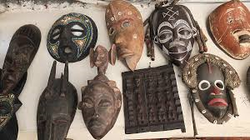
- ·Before Islam, most civilizations practiced different forms of
animism
· The conversion of North Africa to Islam began during the late 600’s as the Umayyad conquest. Muslim merchants brought Islam to east African city-states and West African empires with their goods. The mixture of bantu and Arabic is what made up the Swahili civilization
·Christianity was practiced in Ethiopia and in Egypt due to the
slave trade and Portuguese missionaries introduced Christianity in some places
such as Kong
· In most areas, there was no forced conversion of citizens to Islam and many continued
traditional religious practices as well as included them in their new
religion
· The conversion to Islam provided for better relations with merchants, Islamic states
and Muslim nomads.
· MansaMusa made Islam better known and he made the pilgrimage to mecca, lavishing
those who hosted him with gifts.
· Most emperors and kings were Muslim by the tenth century and most wealthy merchants
converted as well.
Society

·Most sub-Saharan communities were small and social life revolved around the
village
· Food was provided through hunting, herding and
agriculture
· Most African societies gained their metalworking skill on their own
· Women in sub-Saharan Africa tended to be lower in position compared to men but were valued for their labor as fieldworkers
· Women were also respected for their role in educating the young people in society and
their abilities of oral tradition
· Unlike in most societies, lineage was mostly matrilineal and women inherited property and
husbands were required to move into the wife’s home. This was affected by the
spread of Islam and the strict rules imposed by the Quran on women, including
the use of a veil.
· Population was affected by the slave trade as it disrupted
families and there was an unequal proportion between men and
women.
village
· Food was provided through hunting, herding and
agriculture
· Most African societies gained their metalworking skill on their own
· Women in sub-Saharan Africa tended to be lower in position compared to men but were valued for their labor as fieldworkers
· Women were also respected for their role in educating the young people in society and
their abilities of oral tradition
· Unlike in most societies, lineage was mostly matrilineal and women inherited property and
husbands were required to move into the wife’s home. This was affected by the
spread of Islam and the strict rules imposed by the Quran on women, including
the use of a veil.
· Population was affected by the slave trade as it disrupted
families and there was an unequal proportion between men and
women.
innovation
·Timbuktu was developed and manuscripts were translated in its
universities
· Traditional literature, folk tales, were passed down through oral
tradition by griots
· Documents used in law, religion, and history were all written in
Arabic
· Skills to produce iron were learned on their own by African societies, rather than by
learning from other civilizations
· Storytellers acted as entertainers and as advisors to
kings
·The most famous epic is Son-jara (Sundiata) fromMali
universities
· Traditional literature, folk tales, were passed down through oral
tradition by griots
· Documents used in law, religion, and history were all written in
Arabic
· Skills to produce iron were learned on their own by African societies, rather than by
learning from other civilizations
· Storytellers acted as entertainers and as advisors to
kings
·The most famous epic is Son-jara (Sundiata) fromMali
Arts

·African tribes had a high degree of skill for carving and sculpting, especially in wood and ivory
·Metal sculptures became more popular over time and by the thirteenth and fourteenth century, West African artists were making art out of bronze and
ivory
·Most sculpting has been influenced from the state of Benin
· Architecture varied across regions due to the many diverse
cultural influences
· In the Great Zimbabwe, there were many impressive stone buildings and walls. These
building had been made with stones carefully cut and without the use of
mortar.
· In Mali, builders used timber as abases to reinforce mud mosques. This showed the cultural blending of Islamic architecture with native architecture
· Ethiopian Christian churches were carved into the mountains
· A lot of native art and architecture was closely tied to the animistic religion
·Metal sculptures became more popular over time and by the thirteenth and fourteenth century, West African artists were making art out of bronze and
ivory
·Most sculpting has been influenced from the state of Benin
· Architecture varied across regions due to the many diverse
cultural influences
· In the Great Zimbabwe, there were many impressive stone buildings and walls. These
building had been made with stones carefully cut and without the use of
mortar.
· In Mali, builders used timber as abases to reinforce mud mosques. This showed the cultural blending of Islamic architecture with native architecture
· Ethiopian Christian churches were carved into the mountains
· A lot of native art and architecture was closely tied to the animistic religion
Near geographic
·The Sahara divided Africa not only physically but culturally as well. Almost all of Saharan Africa had become
part of the Islamic world.
·The size and the diverse regions or Africa contributed to the wide variety of languages
and ethnicities. More than 2,000 languages and dialects are spoken in
sub-Saharan Africa
· A limiting factor for the growth of major states was environmental
problems
·The climate of sub-Saharan Africa varies and there are many species of insects that
make it difficult to increase populations
·The way trade was carried out was affected by the climate and regions of Africa, thus
creating caravan trades
· Because raw materials were a big source of trade for many societies, they were
susceptible to decline if the resources were to be depleted. This also affected
the environment around them as deforestation was a problem even back
then.
·The rivers in Africa also played a huge part in trade systems as forms of
transportation. Not only did the rivers transport but they also played a key
role in the agriculture based societies of
Africa.
Sophia Gonzalez-Mayagoitia
part of the Islamic world.
·The size and the diverse regions or Africa contributed to the wide variety of languages
and ethnicities. More than 2,000 languages and dialects are spoken in
sub-Saharan Africa
· A limiting factor for the growth of major states was environmental
problems
·The climate of sub-Saharan Africa varies and there are many species of insects that
make it difficult to increase populations
·The way trade was carried out was affected by the climate and regions of Africa, thus
creating caravan trades
· Because raw materials were a big source of trade for many societies, they were
susceptible to decline if the resources were to be depleted. This also affected
the environment around them as deforestation was a problem even back
then.
·The rivers in Africa also played a huge part in trade systems as forms of
transportation. Not only did the rivers transport but they also played a key
role in the agriculture based societies of
Africa.
Sophia Gonzalez-Mayagoitia
South Asia (500-1500) persian chart
by: America guerrero
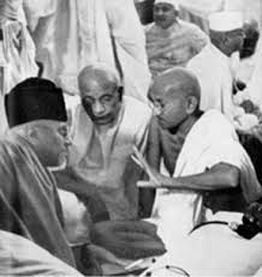
P(olitics):
- During the Umayyad Dynasty (in the early 8th century) Muslims took over parts of
Indus Valley
- Muslim merchants then built communities in major cities of coastal India.
- Muslims established an Islamis state known as the Dehli Sultanate by the
early 13th century
- Mahmud's successors conquered north India in 1206
- This made Islam to begin to have a place in India
- The Sultans' authority did not extend far beyond the capital of Delhi
- Under the Muslim rule, Buddhists and Hindus were able to keep their beliefs, but they were still obbligated to pay taxes
- The Muslim Empire was not tied to Baghdad
- Sultans commanded an army of 3,000 men.
- The Muslim leaders for the next 300 years called themsleves "The Sultans" although they never fully gained control over the regional Hindu Leaders.
- The Muslim's political structure wasn't very solid because the Sultans never established a permanent bureaucracy.
- The Hindu South was politically divided but relatively peaceful
- The Chola Kingdom was a larger kingdom, ruled Coromandel coast
- In its accomplishments it dominated waters from South China Sea to Arabian Sea and conquered Ceylon and parts of southeast Asia
- It was not a tightly centralized state but it had a strong local autonomy

- E(conomic):
Delhi was the second largest and most urbanized Muslim city in the
world
- International and local trade was all controleld by "Merchant Guilds" and
great merchant families, who also had much power in Indian social life,
politics, and culture.
- This guilds provided wealth through taxation, important products from
foreign lands, lending money to kings and financing cultural activities - Trade was an improvement in economy in South Asia; Indians, Arabs, Persians,
Turks, Jews, Africans, Malays, Sumatrans, Javanese, Chinese, and a few Europeans
came together to trade products and ideas in thriving market towns and coastal
India. - One gained an inmense economin advantage in his struggles with rival
dynasties if the ruler obtained the support of indian merchant castes and
controlled major trade routes. - India offered the production fo high-quality cotton textiles thrived, sugar, leather, stone, carpets, iron and steel; and got silks and porcelain from China, spices from southeast Asia, pepper, gems, pearls, and cotton from India, inscence and horses from Arabia and southwest Asia, gold, ivory, and slaves from east Africa.
- Agriculture still held up big part of the economy, almost 90% fo the population were still peasant farmers living in small villages living upon their agriculture.
- Each state was still required to have a strong agricultural base, despite their wealth made by trade.
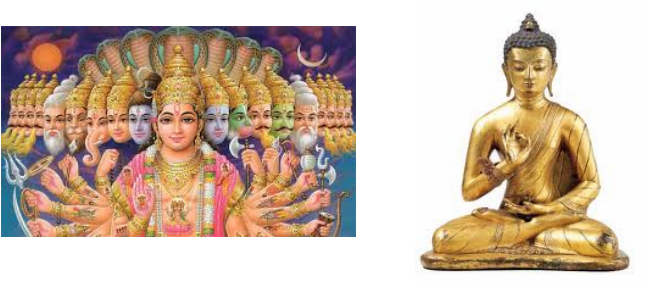
R(eligion):
- The Islamic government took over and obtained 25% of the population to convert to Islam by 1500 CE.
- Sufi's were the most effective agents of conversion to Islam
- Some low-caste and outcastes along with some Buddhists converted to Islam because of egalitarian
aspects. - While others converted to Islam just to avoid having to pay taxes.
- Sufis were effective missionaries who emphasized piety and devotion and observed old rituals.
- As a result of loosing so many people to Islam, the Hindus established what they called "BHAKTI cults", which offered priviledges and access to women and untouchables, and taught universal love and devotion.
- Hindus then offered salvation and moral thoughts and accomplished to expand the Hindu devotional cults, due to the influence of Buddhism and Islam.
- The Pilgrimages, were special festival seasons that drew 1000s of Hindu worshipers to temples, then served as centers of economic exchange, scholarship, and exchange of ideas.
- Sanskrit kept unifying cultural and religious languages of India, but literature was then translated into regional languages.

S(ocial):
- Muslim princes adopted regal practices that were alike to those of Hindus and against the Quran.
- Muslims created a type of caste system amungst the people.
- New merchants sub-castes were formed in the form of workers' guilds, due to the growth of trade.
- The guilds were allies to royal families on India to improve the economy
- Some guilds had their own armies to defend guilds' interests or to be mercenaries, because of how much power they had.
- The Ritual of SATI was practiced traditionally, the women now widows
would be burned once
their husband died. - Women were inferrior, they were obligated to marry at a very young age and were not allowed to ever
remarry. - South Asia still remained the region with the least Muslim people.

I(nnovation):
- Muslims maintained power with armies
- Southeast Asia adopted a lot of customs from South Asia becoming more like them.
- Interactions between Muslims, Hindus, and Buddhists beliefs happened. A significant port was melaka.

A(rts and architecture):
- Kabir was a female poet who wrote religious poems in the regional language.
- Pictures and poetry of Bhaki movement show personalized devotion.
- Dhows were large ships for Indian Ocean trade.
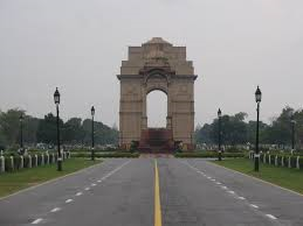
N(ear geography):
http://mrfarshtey.net/classes/India-Southeast_Asia-PostClassical.pdf
http://www.slideshare.net/DrBG/china-india-in-the-postclassical-period
http://prezi.com/azeufcjjhy7b/social-and-gender-roles-during-the-post-classical-period/
- Muslims controlled a large area of India, but their rule was never an extension of the Middle East Muslim empire.
- The sultans established their capital at Delhi. This was a strategic site controlling access from Punjab to the Ganges valley.
http://mrfarshtey.net/classes/India-Southeast_Asia-PostClassical.pdf
http://www.slideshare.net/DrBG/china-india-in-the-postclassical-period
http://prezi.com/azeufcjjhy7b/social-and-gender-roles-during-the-post-classical-period/
P.E.R.S.I.A.N
Chart
EAST aSIA
500-1500
bY: CHRISTIAN ESTRADA
Political~
- Sui take over from Han, doesn't last.
- Sui government: organized massive labor projects for the Grand Canal. Organized a decent army. Had a centralized form of government. Over taxation, over-extension forced decline of the Sui.
- 618 – Tang take over Sui. Last until 907.
- Tang government: founded by Li Shimin. It was decentralized. Local autonomy for local officials, religious authorities.
- Han tributary system: outside kingdoms stay independent, but acknowledge Tang supremacy.
- Scholar-gentry rose greatly during this period, even above established aristocrats. Scholars received better jobs.
- Wu Zhao was a female ruler. Claimed to be a Daoists/Buddhists in government, upsetting many Confucians
- 960 – Song founded. Last until 1279.
- Examinations for Government jobs.Better test scores got you a better job. The exam was a pretty big deal.
- System was expanded, test standards were lowered to allow more people into government bureaucracy.
- Alternated between war/diplomacy w/immediate neighbors in Korea, Vietnam, Japan
economic~
- Sui: centralized economy with government controlled industries. Large numbers of men needed for military campaigns & domestic building projects.
- Grand Canal: linked Yellow/Yangtze rivers & aided trade in Central China.
- Military campaigns in Korea cost a lot.
- Participated heavily in Indian Ocean trade. Maritime experts.
- Song: printed paper money which led to high inflation & was eventually abandoned. Spent most of their money on the military.
- Tax farming: private individuals employed by government to collect taxes. Led to high prices – tax farmers wanted a profit, so charged exorbitant amounts.
- Heavy industry, Textiles, Porcelain, Silk, Paper.
- Champa rice: rice from Vietnam, matured quickly & allowed a 2nd annual harvest.
REligion~
- Sui – State Confucianism. Entrance exams for government jobs.
- Tang – Mahayana Buddhism. Mahayana priests helped translate Buddhist texts into local languages. Also helped locals incorporate their gods into Buddhism. Daoism/Confucianism still major religions.
- After Tang were defeated by Arabs at Talas River, many Buddhists were discriminated against. Viewed as foreigners & against mainstream Confucianism. Buddhist monasteries were crushed, but Buddhism wasn't stamped out.
- Song: Zen Buddhism. Disciplined meditation.
social~
- Tang – cosmopolitan capital: Chang’an.
- Tang state combined Central Asian/Chinese culture
- Trade made the city cosmopolitan
- Peasants = unhappy w/oppressive local lords & taxation. Rebellions spelled end for Tang state. Many foreigners also blamed in rebellions – resulted in massacring of outsiders.
- Tang struggles in war/rebellions resulted in xenophobia.
- Song: Pop growth due to agricultural/economic prosperity.
- Cities: large wooden, multi-story apts. Closely built together (allowed much crowding, disease – eventually new building codes were adopted)
- Class structure – non-government workers could become wealthy. Land wasn't the only thing that made you a profit any more.
- Women: subjugated. Confucians emphasized women’s traditional roles, did let women read (only to read books that told them to be subservient). Footbinding also became widespread – a visual embodiment of female subjugation. Strangely enough, it became a status symbol amongst the elite.
- Neo-Confucianism – Zhu Xi. New approach to Confucian texts: Human nature is still essentially good, moral, rational.
Innovation~
- Tang: facilitated the Silk Road. Employed credit for purchases like credit cards.
- song- printed paper money.
- Major trading routes to east Africa
- Civil service exams
arts~
- sui- Grand canal irrigation
- Tang crossbow and armed infantry.
- built many palaces, and new capital cities
near geography~
- sui dynasty expanded to include the Chen Kingdom in Southern China.
- Tang- expanded into Central and East Asia.

